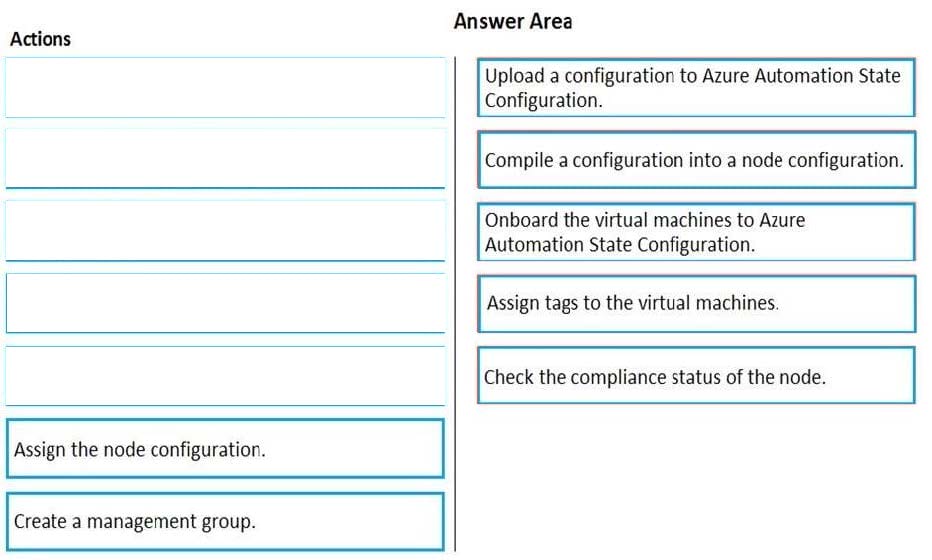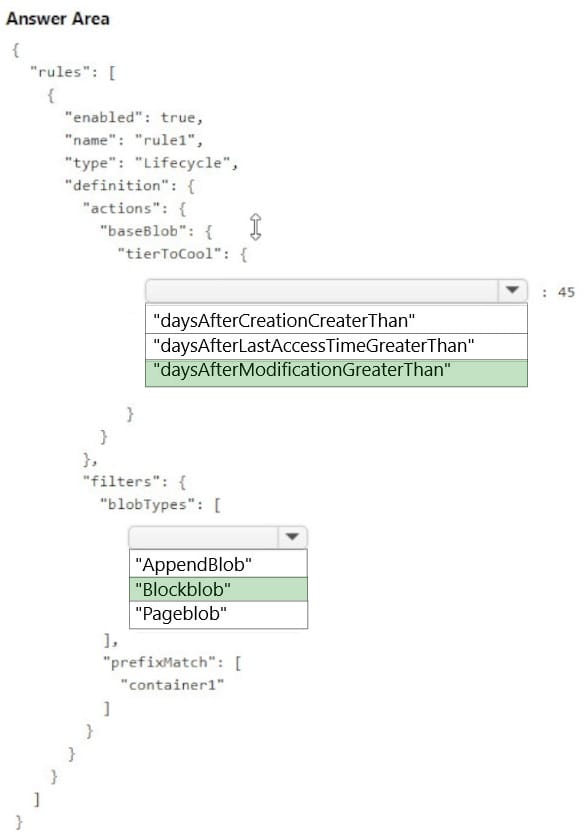AZ-104 Online Practice Questions and Answers
DRAG DROP
You need to use Azure Automation State Configuration to manage the ongoing consistency of virtual machine configurations.
Which five actions should you perform in sequence?
To answer, move the appropriate action from the list of actions to the answer area and arrange them in the correct order. NOTE: More than one order of answer choices is correct. You will receive credit for any of the correct orders you select.
Select and Place:
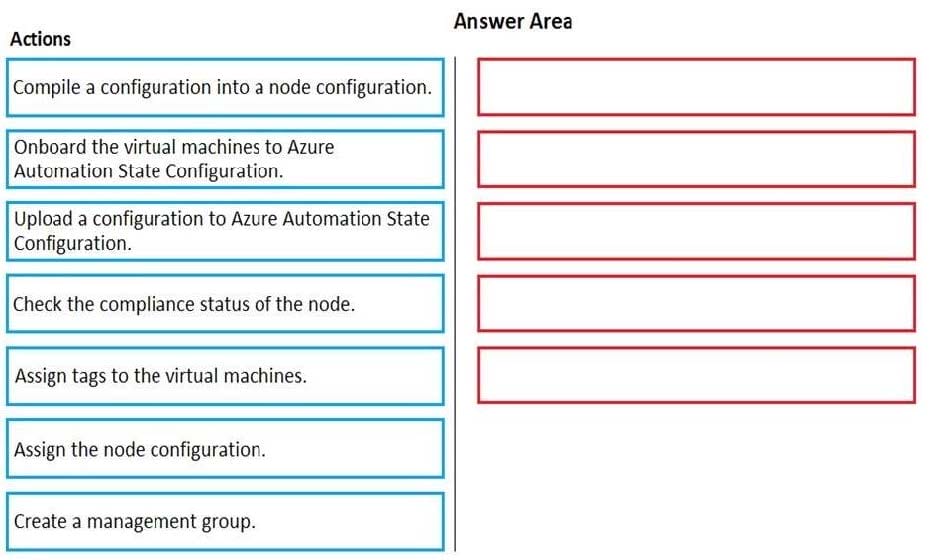
HOTSPOT
You have an Azure Active Directory (Azure AD) tenant that contains three global administrators named Admin1, Admin2, and Admin3.
The tenant is associated to an Azure subscription. Access control for the subscription is configured as shown in the Access control exhibit. (Click the Access Control tab.)
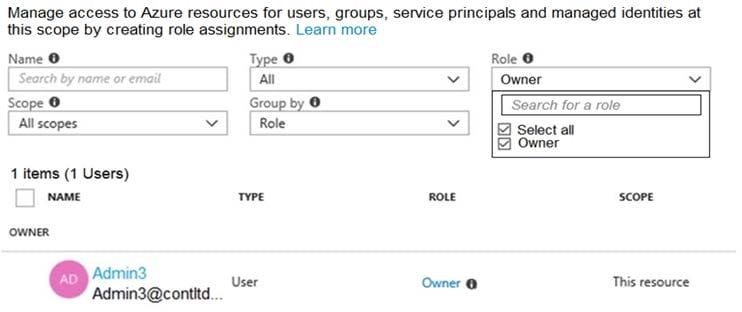
You sign in to the Azure portal as Admin1 and configure the tenant as shown in the Tenant exhibit. (Click the Tenant tab.)
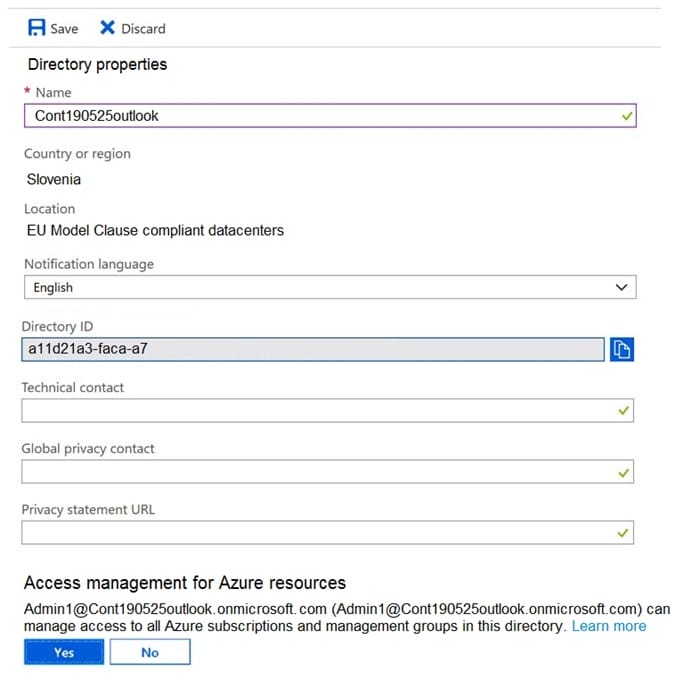
For each of the following statements, select Yes if the statement is true. Otherwise, select No.
NOTE: Each correct selection is worth one point.
Hot Area:

HOTSPOT
You have an Azure subscription that contains a storage account named storage1. The storage1 account contains a container named container1.
You create a blob lifecycle rule named rule1.
You need to configure rule1 to automatically move blobs that were NOT updated for 45 days from contained to the Cool access tier.
How should you complete the rule? To answer, select the appropriate options in the answer area.
NOTE: Each correct selection is worth one point.
Hot Area:
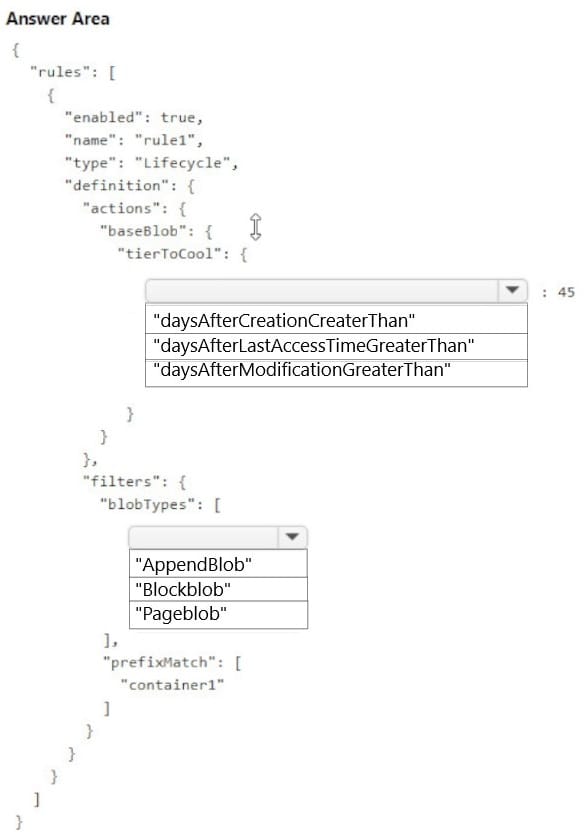
You have a Basic App Service plan named ASP1 that hosts an Azure App Service named App1. You need to configure a custom domain and enable backups for App1. What should you do first?
A. Configure a WebJob for App1.
B. Scale up ASP1.
C. Scale out ASP1.
D. Configure the application settings for App1.
You have an Azure subscription that contains the identities shown in the following table.

User1, Principal1, and Group1 are assigned the Monitoring Reader role.
An action group named AG1 has the Email Azure Resource Manager Role notification type and is configured to email the Monitoring Reader role.
You create an alert rule named Alert1 that uses AG1.
You need to identity who will receive an email notification when Alert1 is triggered.
Who should you identify?
A. User1 and Principal1 only
B. User1, User2, Principal1, and Principal2
C. User1 only
D. User1 and User2 only
Note: This question is part of a series of questions that present the same scenario. Each question in the series contains a unique solution that might meet the stated goals. Some question sets might have more than one correct solution, while
others might not have a correct solution.
After you answer a question in this section, you will NOT be able to return to it. As a result, these questions will not appear in the review screen.
You have an app named App1 that is installed on two Azure virtual machines named VM1 and VM2. Connections to App1 are managed by using an Azure Load Balancer.
The effective network security configurations for VM2 are shown in the following exhibit.
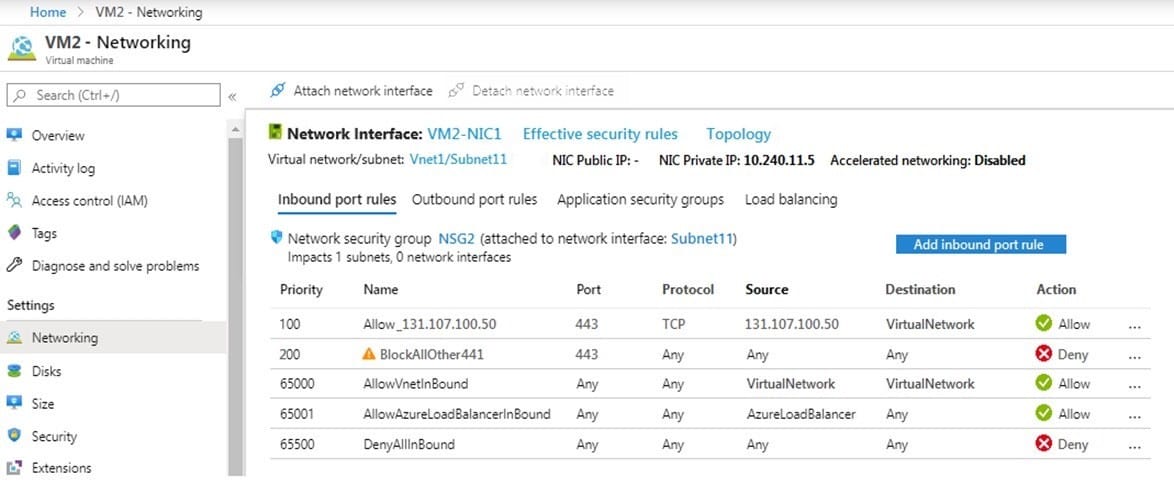
You discover that connections to App1 from 131.107.100.50 over TCP port 443 fail.
You verify that the Load Balancer rules are configured correctly.
You need to ensure that connections to App1 can be established successfully from 131.107.100.50 over TCP port 443.
Solution: You create an inbound security rule that denies all traffic from the 131.107.100.50 source and has a cost of 64999.
Does this meet the goal?
A. Yes
B. No
You administer a solution in Azure that is currently having performance issues.
You need to find the cause of the performance issues pertaining to metrics on the Azure infrastructure.
Which of the following is the tool you should use?
A. Azure Traffic Analytics
B. Azure Monitor
C. Azure Activity Log
D. Azure Advisor
You have an Azure subscription that contains a resource group named TestRG.
You use TestRG to validate an Azure deployment.
TestRG contains the following resources:

You need to delete TestRG. What should you do first?
A. Modify the backup configurations of VM1 and modify the resource lock type of VNET1.
B. Turn off VM1 and delete all data in Vault1.
C. Remove the resource lock from VNET1 and delete all data in Vault1.
D. Turn off VM1 and remove the resource lock from VNET1.
You have an on-premises server that contains a folder named D:\Folder1.
You need to copy the contents of D:\Folder1 to the public container in an Azure Storage account named contosodata.
Which command should you run?
A. https://contosodata.blob.core.windows.net/public
B. azcopy sync D:\folder1 https://contosodata.blob.core.windows.net/public--snapshot
C. azcopy copy D:\folder1 https://contosodata.blob.core.windows.net/public--recursive
D. az storage blob copy start-batch D:\Folder1 https://contosodata.blob.core.windows.net/public
You have an Azure subscription that contains the resources shown in the following table.

You need to configure a proximity placement group for VMSS1.
Which proximity placement groups should you use?
A. Proximity2 only
B. Proximity 1, Proximity2, and Proximity3
C. Proximity 1 and Proximity3 only
D. Proximity1 only

